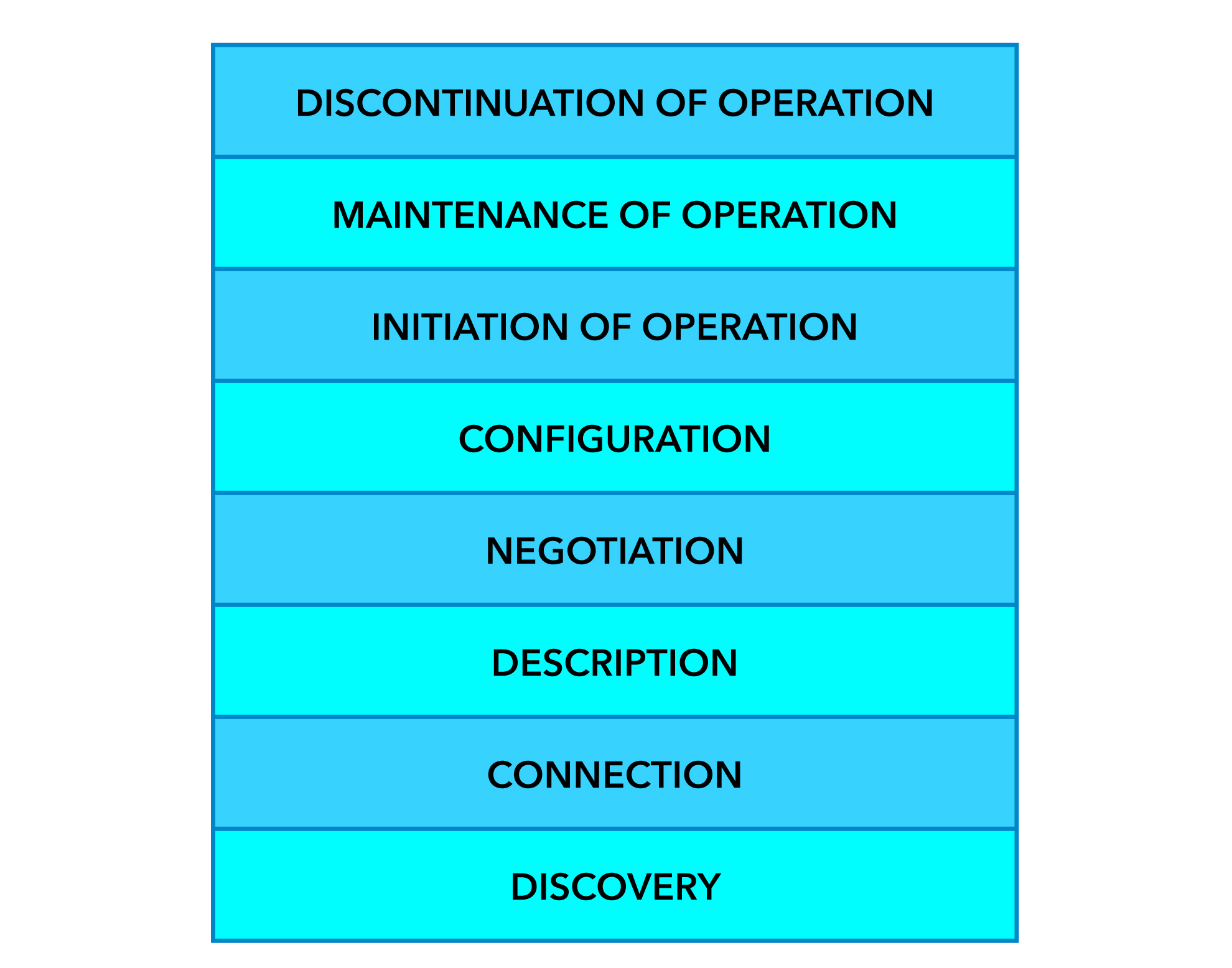Agile Standards for 5G Slicing
Negotiation Framework
With this background, the framework for the negotiation process becomes clear. It should follow the process shown in Figure 3, starting at the bottom of the figure and proceeding to the top.
The first step is Discovery. For example, Network A must discover that Networks X, Y, Z, and B are available. Then, Network A must connect to them. Once connected, they need to exchange basic description information; that is, enough information to determine if it makes sense to start negotiation. Given today’s Web and Web-related tools, Discovery, Connection, and Description can be done through common Web resources and do not need any special detailed standards. Based on the Description information, Network A has to decide which other networks to start negotiation with. There may be security-related aspects of these and the following steps in the process. These security aspects will be discussed in a subsequent article.
Figure 3. NFO Process
Click to Enlarge
In this automated world, the NFOs have to make decisions. These decisions are based on Objectives, Algorithms, and Constraints. There is experience with this kind of decision-making in SON (Self Organizing Networks). SON promulgated by 3GPP is used for certain tactical activities such as load balancing in neighborhoods of cellular basestations. In SON, the objectives, algorithms, and constraints are hardwired and the range of choice or decision is very limited. With NFOs, the range of objectives, algorithms, and constraints will be much greater. With networks having multiple NFOs, there will be a need for another component that configures each NFO and gives it its objectives, algorithms, and constraints. Discussion of that component will be the subject of a subsequent article.
Based on its objectives, algorithms, and constraints, and the Description information acquired through Connection, Network A’s NFO decides which other networks’ NFOs to begin negotiation with. It is possible (and may in fact be desirable) that there will be more than one negotiation going on in parallel (where for example, Network A is negotiating with Networks X, Y, and Z for the same slice, then picking the best one). Typically, the negotiation will start with a bid by NFO A. The corresponding NFO responds with either a bind accepting the bid, or with a bid of its own. This bid/bind process continues until a complete Contract is agreed or it becomes clear that it is not possible or desirable to reach a contract. Creation of a contract completes the Negotiation phase of NFO.
Once created, the contract specifies how the two interacting networks (in Figure 2, Networks A and B) need to configure themselves. Because service initiation may require fine-grained time synchronization, the configuration and initiation stages are separated. As per contract, once the configuration stage has been completed, the service(s) across the network slice are Initiated. Initiation has now created a Federated network slice transiting the two administrative units. Now Maintenance begins.
Maintenance is the ongoing orchestration process that attempts to maintain the slice operating as per the contract. The contract may provide for specific actions if behavior deviates from what has been agreed upon, for example, if an outage occurs such that Network B can no longer provide service. If so, those steps are taken. If the deviation can’t be cured by those agreed-upon steps, or there are no such agreed steps in the contract, negotiation attempting to achieve a new contract is started. If that negotiation fails, then Network A goes back to Discovery and proceeds from there. To make this possible, the contract should also specify what monitoring information is to be shared so that deviations from contracted behavior can be measured.




















